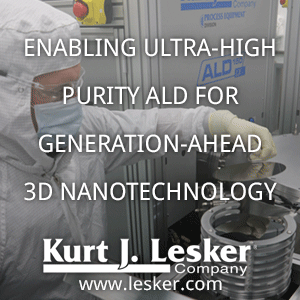TSMC’s decision to exclude Chinese equipment vendors from its 2 nm fabs in Taiwan and the US reshapes the competitive landscape in favor of Japanese, American, and European suppliers. With the 2 nm node set to become the largest in history by wafer volume and revenue potential, this policy shift effectively concentrates demand among a handful of Tier 1 players —ASMI, TEL, Applied Materials, and Lam Research—who already dominate in deposition, etch, and cleaning tools essential for nanosheet GAA and backside power delivery. No need to mention ASML.
Announced in January: TSMC is advancing with its 2 nm (N2) technology, establishing a pilot line at its Hsinchu Baoshan Fab 20 with an initial monthly output of around 3,000–3,500 wafers. By combining production from Hsinchu and Kaohsiung, the company expects to exceed 50,000 wafers per month by the end of 2025 and reach about 125,000 wafers per month by the end of 2026. Output at Hsinchu should rise to 20,000–25,000 wafers per month by late 2025 and 60,000–65,000 by early 2027, while Kaohsiung is projected to produce 25,000–30,000 wafers monthly by late 2025 and also expand to 60,000–65,000 by early 2027. Chairman C.C. Wei has highlighted that demand for 2 nm exceeds that of 3 nm, driven by its 24–35% lower power consumption, 15% performance boost at the same power, and 15% higher transistor density. Apple will be the first adopter, followed by MediaTek, Qualcomm, Intel, NVIDIA, AMD and Broadcom.
TSMC will start 2 nm mass production in Taiwan in the second half of 2025, initially with Fab 22 in Kaohsiung as the anchor site for yield learning. The first ramp is set at 40,000 wafers per month, expanding to 100,000 wafers per month in 2026 and reaching 200,000 wafers per month by 2027, making N2 the largest and most profitable node in TSMC’s history.
In the US, Arizona Fab 21 is being developed in phases. Phase 1 is already producing 4 nm chips, Phase 2 will start 3 nm by late 2025 or early 2026, and Phase 3 is planned for 2 nm and A16-class chips toward the end of the decade. This ensures that while Taiwan remains the cost-optimized base for N2 production, Arizona provides premium, subsidy-supported capacity for US customers, diversifying geographic and geopolitical risk.
Overall, Taiwan will carry the bulk of N2 output and cost efficiency, while Arizona secures local supply for strategic US clients like Apple, Nvidia, AMD, and Intel. By 2027, with 200,000 wafers per month globally, N2 alone could generate nearly $50 billion annually, cementing TSMC’s central role in powering AI and HPC expansion.
The move aligns directly with Washington’s Chip EQUIP Act, which ties subsidies to avoiding “foreign entities of concern.” By pre-emptively removing Chinese tools, TSMC safeguards its access to US incentives while giving its global customers—Apple, Nvidia, AMD, and Intel—assurance that supply chains are insulated from geopolitical risk. This codifies the leading suppliers as the “trusted” baseline for advanced-node capacity worldwide, effectively reinforcing their moat at the most profitable process node ever.
For ASMI, TEL, AMAT, and Lam, the outlook is very positive. With Chinese competitors pushed out, these companies can win more business and have stronger pricing power. At the same time, 2 nm wafer prices are climbing toward $30,000, far above older smartphone-focused nodes. TSMC is reviewing its suppliers for profit margins and China ties, but these four are essential for 2 nm production, so they are more likely to gain from rising demand and higher-value tools than lose ground. Put simply, the 2 nm era is set to drive lasting growth and profits for them as AI adoption accelerates through 2027.
Chinese semiconductor equipment OEMs that are cut out from TSMC’s 2 nm fabs under the new restrictions and supplier realignment:
- AMEC (Advanced Micro-Fabrication Equipment Inc.) – leading Chinese etch tool supplier, with relevance in dielectric etch and epitaxy
- Naura Technology Group – broad portfolio in etch, deposition, and cleaning tools
- Mattson Technology (China-owned, via E-Town Dragon Semiconductor) – focuses on dry strip, rapid thermal processing (RTP), and etch
- SMEE (Shanghai Micro Electronics Equipment) – China’s only domestic lithography tool maker (far behind in capability, but relevant in domestic fabs)
- Kingsemi – maker of ALD/CVD equipment, mainly for memory and advanced logic
- Piotech – deposition (CVD, PECVD, ALD) equipment vendor
- ACM Research (China) – cleaning and electrochemical deposition tools (though headquartered in the US, its operations are China-based and increasingly seen as China OEM)
At TSMC’s 2 nm fabs, the exclusion of Chinese equipment vendors channels ALD equipment demand entirely to US, European, and Japanese suppliers. ASM International (Europe) remains the clear leader in single-wafer ALD for high-k metal gate stacks and nanosheet spacers, with Applied Materials and Lam Research (US) competing in selective and plasma ALD for gate-all-around and backside power steps, while Tokyo Electron and Kokusai Electric (Japan) cover both single-wafer and batch ALD, particularly for spacer and liner deposition. By contrast, Chinese ALD players such as Naura, Kingsemi, and Piotech, while active in domestic logic and memory at 28–14 nm and some 7 nm non-EUV capacity, will not gain any capability at N2 and are explicitly excluded under TSMC’s supplier policy and US subsidy rules, leaving the largest and most profitable ALD opportunity in history to be divided among the established US, European, and Japanese Tier-1 suppliers.



%20(1).png)




